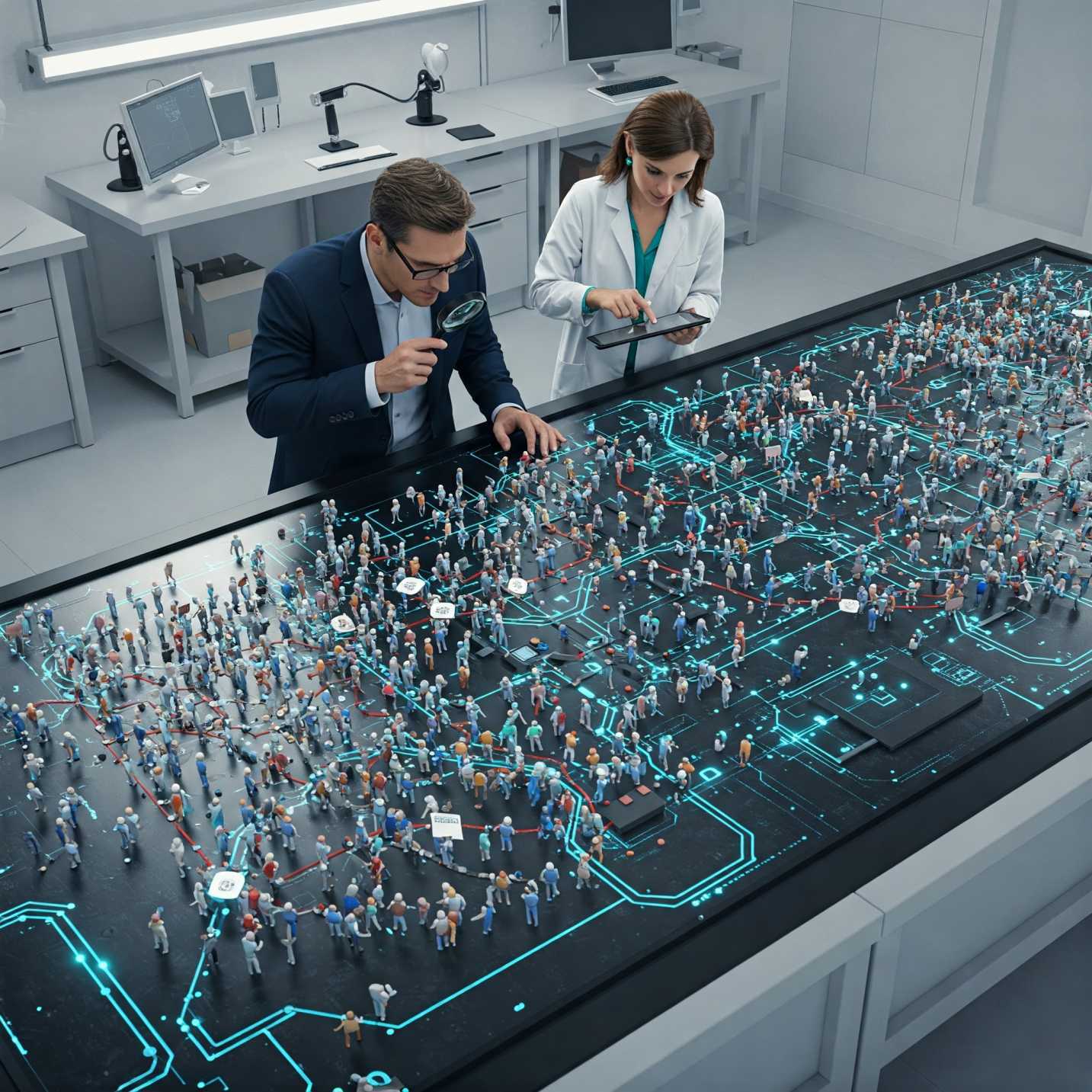The Individual is Key: A Bottom-Up Approach to Complexity

Ever wondered how a flock of birds can move with such synchronized grace, or how a disease spreads through a population? These complex phenomena, seemingly driven by a collective intelligence, can be better understood through a powerful computational approach called Agent-Based Modeling (ABM).
Instead of focusing on aggregate behavior, ABM takes a different route. It zooms in on the individual "agents" within a system – be they birds, people, cells, or even autonomous vehicles. Each agent is defined by its own set of attributes, behaviors, and rules for interacting with other agents and its environment.
Think of it like building a virtual world populated by autonomous entities. You define how each entity operates individually, and then you let them interact. The beauty of ABM lies in its ability to simulate how these individual interactions can lead to emergent, large-scale patterns that wouldn't be obvious by just looking at the individual components.
So, where can you see Agent-Based Modeling in action? The applications are vast and constantly expanding:
- Ecology: Understanding animal behavior, population dynamics, and the spread of invasive species. Imagine simulating how different foraging strategies of deer impact forest vegetation.
- Epidemiology: Modeling the spread of infectious diseases and evaluating the effectiveness of intervention strategies like vaccination or social distancing.
- Social Sciences: Studying opinion dynamics, the formation of social networks, and the behavior of crowds. Think about simulating how rumors spread through a community.
- Economics and Finance: Analyzing market dynamics, simulating trading behavior, and understanding the impact of policy changes.
- Urban Planning: Modeling traffic flow, pedestrian movement, and the growth of cities.
- Manufacturing and Logistics: Optimizing supply chains and simulating the behavior of complex production systems.
Why is ABM so powerful?
- Captures Heterogeneity: Real-world systems are rarely uniform. ABM allows for the representation of diverse agents with unique characteristics.
- Models Local Interactions: It focuses on how individuals interact directly with their neighbors and environment, reflecting the local nature of many real-world processes.
- Reveals Emergent Behavior: Complex, system-level patterns can arise naturally from the simple rules governing individual agents.
- Supports "What-if" Scenarios: ABM allows researchers to experiment with different parameters and rules to understand the potential consequences of various changes.
Agent-Based Modeling provides a fascinating lens through which to explore the intricate dance of individual actions and collective outcomes. As computational power continues to grow, ABM is poised to play an even more significant role in helping us understand and navigate the complexities of our world. Stay tuned for more insights into the exciting world of ABM!
